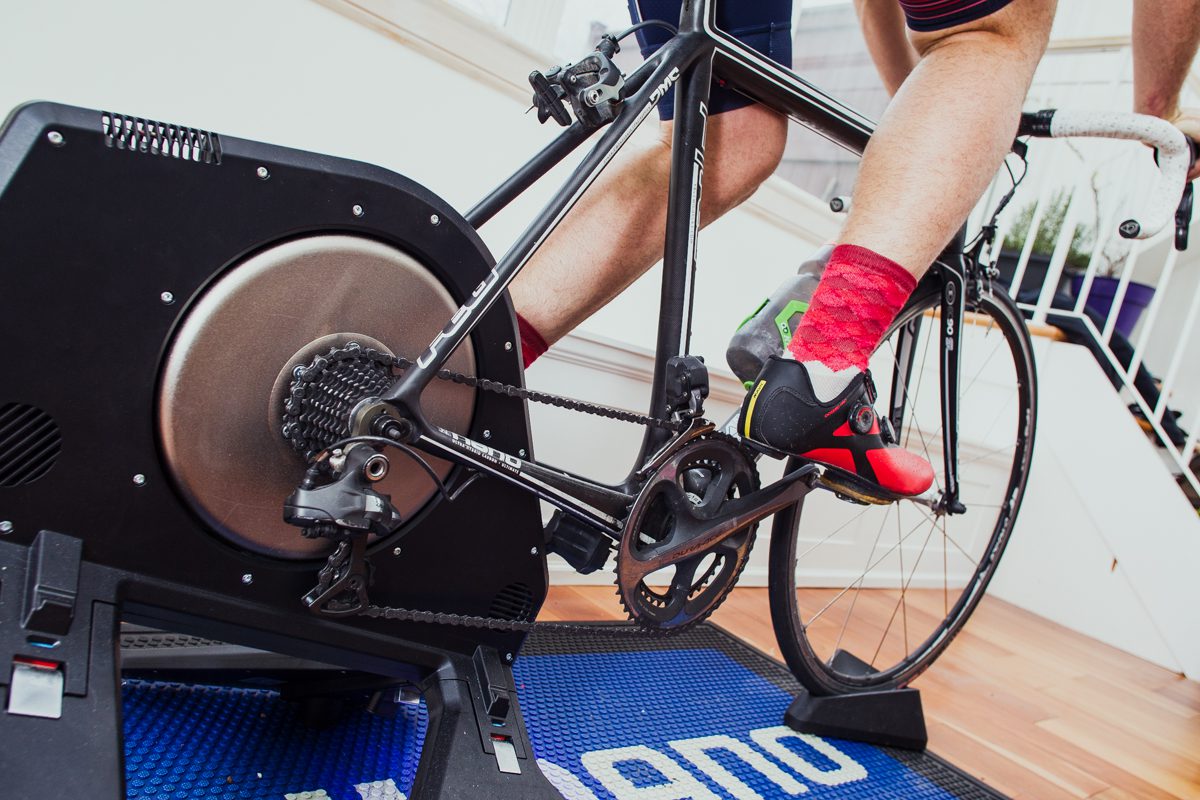Tune up your legs for riding outdoors
Endurance rides with short sprints will have you ready when it’s time to ditch the trainer

by Andrew Randell and Steve Neal of The Cycling Gym
Here we are. The end of winter is in sight. You’ll be outdoors soon enough. We hope you’ve had a good winter, are in decent shape and feel motivated to get outside. Even with the best of winters, though, the transition from training indoors to riding outdoors can be a tricky one. At the gym, we often find that people feel like they are not as fit as they expect for their first few rides outside. For sure, riding the trainer can get you fit, but when you get outside and push on the pedals, it is different.
One thing to work on before getting outside is putting some more tension into the muscles. Often when we ride indoors, whether on erg mode – riding at a steady set resistance – or a course on Zwift, the transitions are fairly smooth. Out in a group or on the trails, there tends to be more sudden accelerations or changes in pace, in which the muscles suddenly find themselves under tension. Here is a great endurance-based workout that mixes in some short sprints to help prepare the body for this type of riding.
This workout helps to increase your normalized power (a metric of how hard a ride will feel to your body) as compared with the average power that you would typically generate if only doing an endurance ride. After taking five to 10 minutes to warm up slowly, you settle into riding at an endurance pace. We can define endurance pace by both power – 60-70 per cent of your maximal aerobic power or MAP (see ‘What is MAP?’) – or 65-75 per cent of your maximum heart rate. While you may start the ride by watching your power, what you really want to do is keep the heart rate within the desired zone. Watch that you don’t start too hard while finding your pace. Ideally, you want to find a wattage that is manageable and that you can hold steady throughout the ride. To stay within the heart rate zone, you will find that you need to go easy on the climbs, push a bit on the descents (where it’s safe to do so) and ride steadily on the flats if you are riding outside. In this way, you are trying to keep your power and heart rate under control so that if you saw them on a graph, their respective lines would be flat and within your prescribed zones.
Now that you have your endurance pace defined, you are going to add in some eight-second sprints. These sprints are what will create the tension in the legs and increase your normalized power. Every eight minutes, do an eight-second, all-out, rip-thecranks-off-your-bike sprint. Once the sprint is over, go easy for a minute or so. Once your heart rate settles, you will find your endurance pace once more until the next sprint. This ride should last about an hour with roughly seven eight-second sprints.
One thing to note: the eight seconds is an estimate for the length of the sprint. You want to sprint as long as there is tension in the pedals. Therefore, on a slight uphill gradient, the sprint might be 10 seconds and on a slight downhill, it might be six seconds.
Don’t be disappointed if your legs don’t feel amazing for the first couple of rides outdoors. Riding outside is a different beast, but you will find that if you have a solid base from winter training, the transition will happen quickly. This workout can help make that transition smoother and, we hope, will have you enjoying your rides outside that much sooner.
What is MAP?
MAP is the maximal aerobic power or the one-minute of maximum power you can hold at the top of a step test. For men, we start a step test at 100 watts and increase the load by 25 watts every three minutes. For women, we start at 80 watts and increase the load by 20 watts every three minutes. A rough equivalent is the power you can hold for a five-minute time trial.
